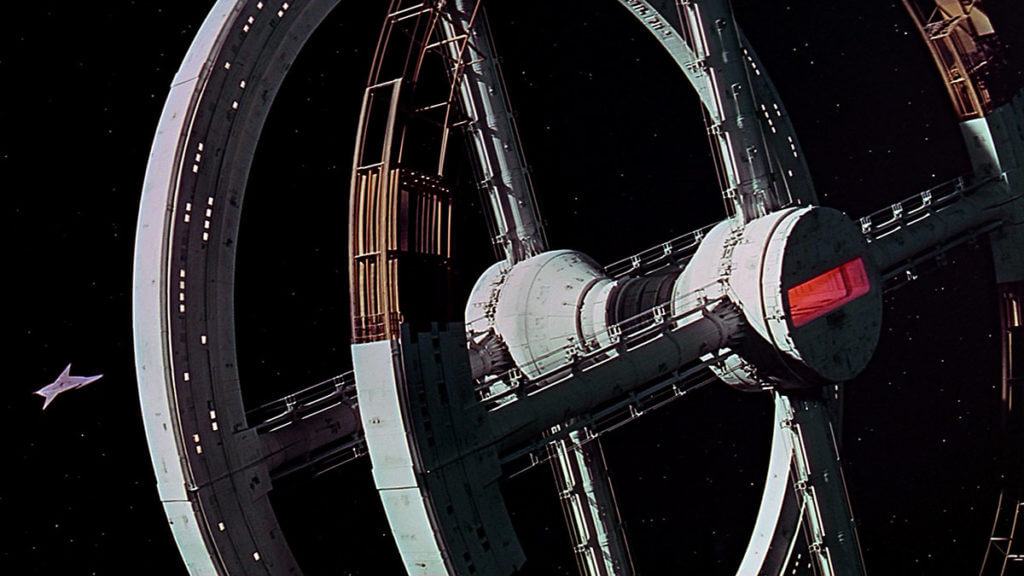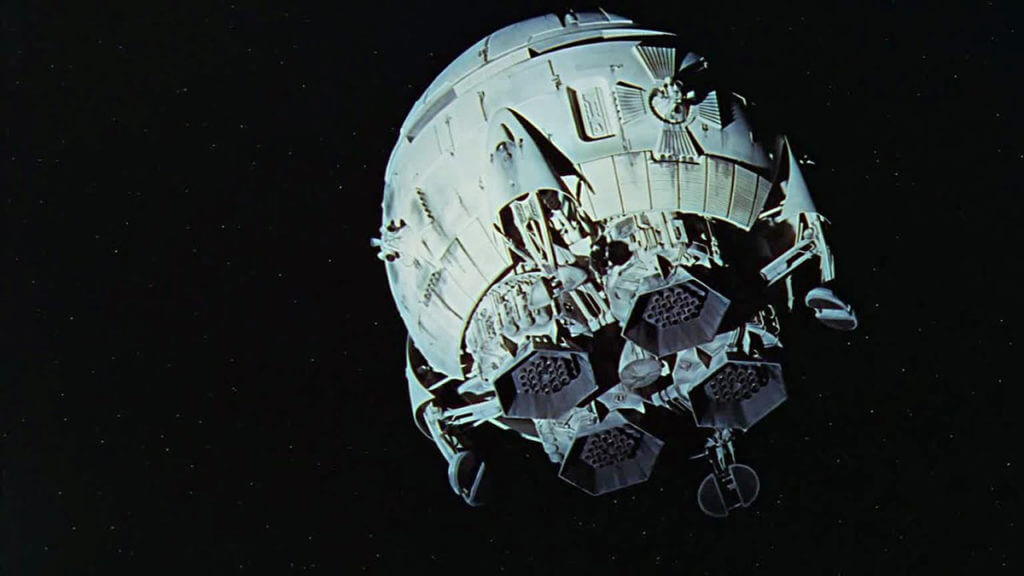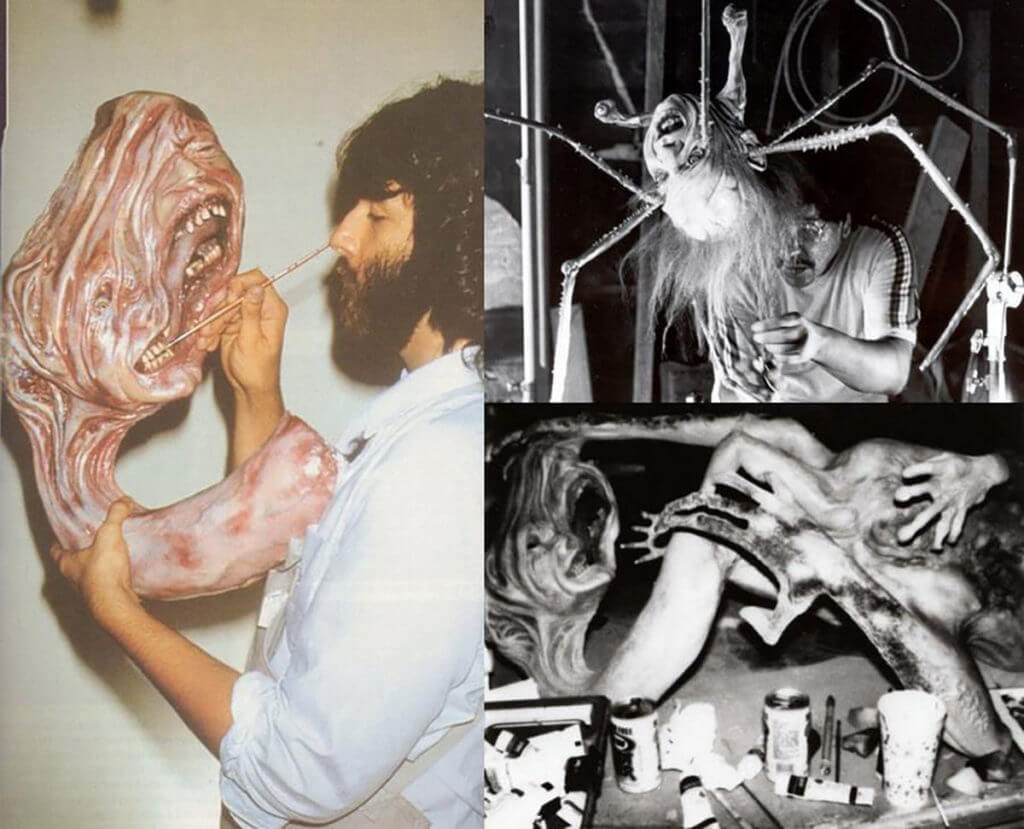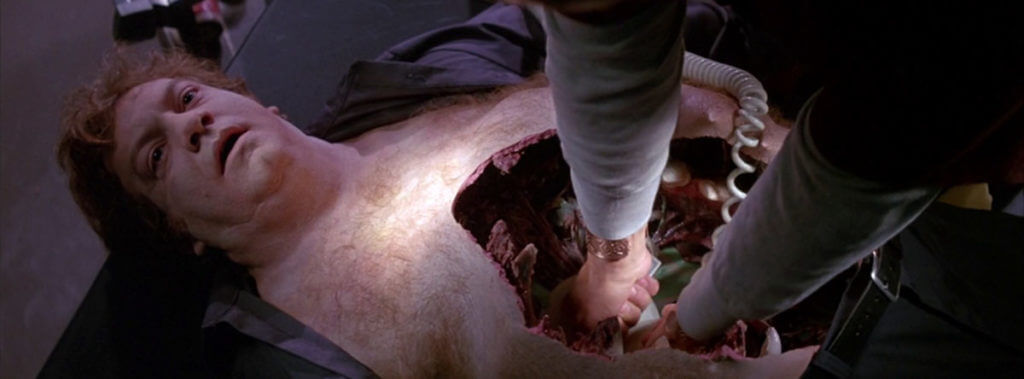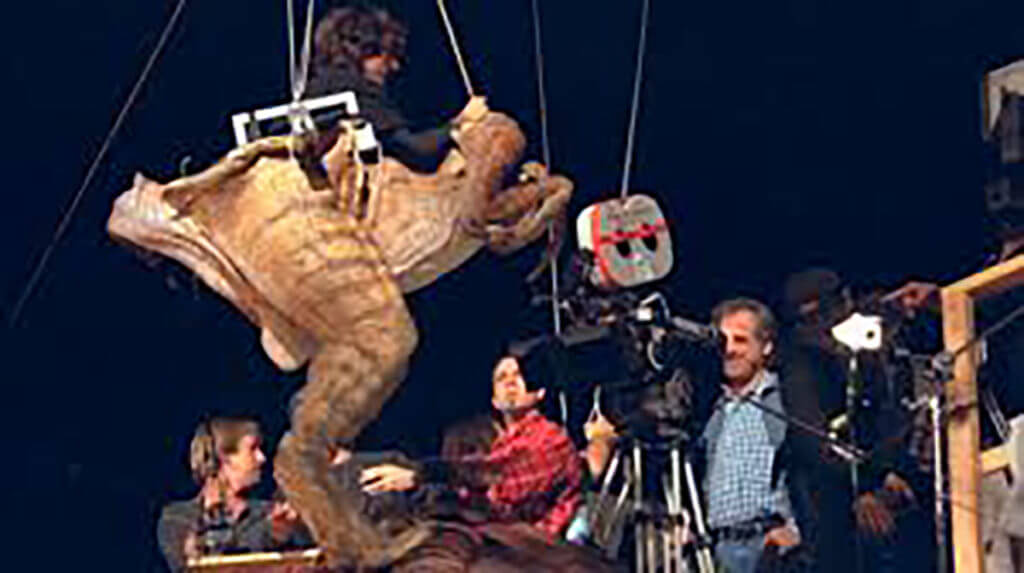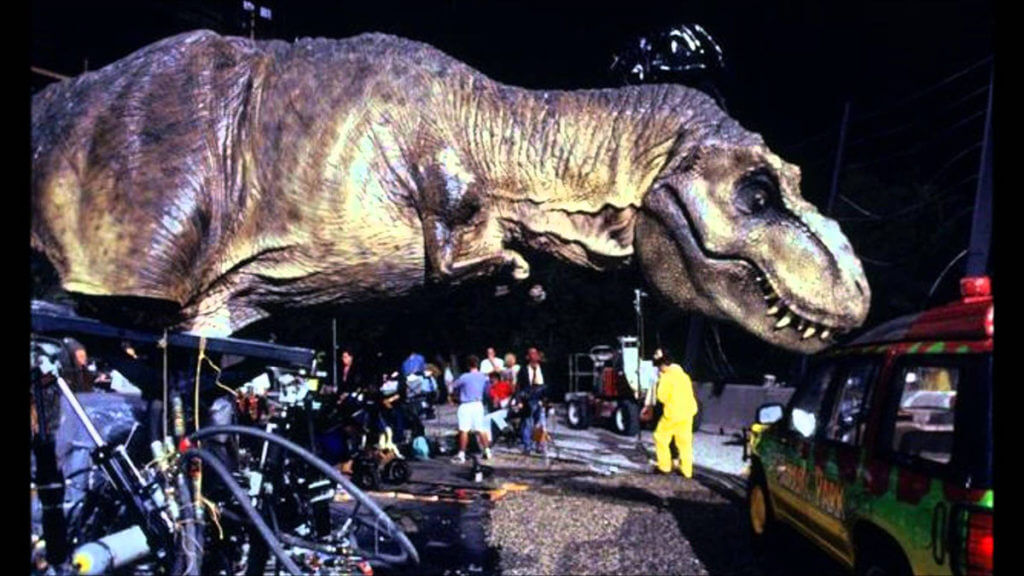Some practical effects have stood the test of time, and will continue to do so for the foreseeable future. Below are three examples of films that fit that description.
2001 A Space Odyssey (1968)
I could have chosen earlier films, such as those by Georges Melies. Or films including the incredible practical work of Ray Harryhausen. However, in terms of effects, 2001 is the starting point for every single modern fiction film about space. It is the granddaddy of all modern sci-fi. I chose it due to its immense and immeasurable influence.
This film is still influential for even the most cutting-edge science fiction filmmakers of today. Its unbelievably high quality practical effects are part of the reason. Every single one of the effects are practical, even the mesmerizing star gate sequence.
Many critics and filmmakers refer to 2001 as, essentially, “a silent film in the sound era.” To watch the film is an almost completely visual experience. The effects must hold up to scrutiny if the majority of the film’s narrative is conveyed visually.
The most stunning of the effects are the spacecraft miniature shots. The effects themselves held up because of the director, Stanley Kubrick. His ingenuity, and his attention to detail.
To a certain extent, Kubrick wanted his futuristic vision grounded in reality. He even hired NASA space vehicle designers as consultants during the construction of the spaceship models.
This film’s timeless visual effect comes from the believable look of the spacecrafts. The enormous amount of detail in the models. The crew built incredible models, but that wasn’t all. The way the film was shot adds to the visuals’ enduring nature.
Kubrick used thousands of rolls of Polaroid film to check the shutter speed, exposure, and lighting configurations for each ship. Then he filed the film away for reference.
The Thing (1982)
Now for a much different kind of science fiction movie. This particular film has little concern for realism. And yet, its amazing 100% practical effects still look comparatively great to today’s sci-fi. Full embrace of the unrealistic attributes of the effects is part of what makes the visuals so timeless.
John Carpenter hired effects wizard Rob Bottin, who spent days on each different effects sequence. He actually ended up in the hospital from exhaustion by the time the film wrapped. Each effects shot called for multiple body molds of the actors. The “body horror” present in The Thing is some of the most imaginative ever.
It wasn’t just the physical makeup of the creature effects. The movie stands out for creative conceptual designs of the monsters. The designs of the creatures themselves were inventive. The creatures’ transformations were highly original. Hand puppets, marionettes and radio controlled the creatures’ movements.
Jurassic Park (1993)
Jurassic Park is maybe not the first film you think as “science fiction.” Nevertheless it fits the criteria. It’s odd to think about, but no other film before Jurassic Park did dinosaurs so realistically. No other film since has done them as believably.
Much like 2001, Jurassic Park‘s effect are heavily rooted in reality. The film used physical scientific evidence paleontologists compiled over the course of history for reference. The incredible detail and lifelike qualities of the dinosaur animatronics are unmatched in film.
The actors shared physical space with these imposing life-size animatronics, giving the film a more dynamic sense of action. From what were essentially mechanical puppets to, in the case of the famous T Rex, huge, complex systems of hydraulics.
The most ambitious dinosaur animatronics Stan Winston’s studio, or anyone else, ever attempted involved the T Rex. Winston’s team studied the movements of reptiles in great detail, then configured the hydraulics after those movements.
Every movement the T Rex made needed to be completely believable from the eyes to the tip of the tail. A 1-to-1 controller, the shape of the animatronic to scale, guided the T Rex’s motion. The studio achieved the appearance of muscles and joints at work in the dinosaur by moving individual sections at a time.
